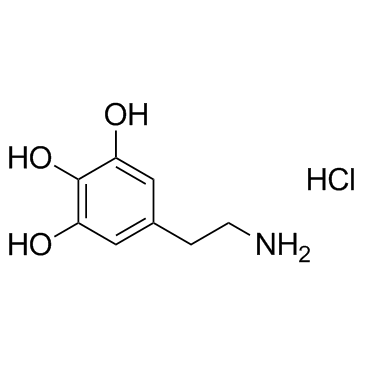Electron microscopic evidence for neurotoxicity in the basal ganglia.
J C Linder, S J Young, P M Groves
Index: Neurochem. Int. 26(2) , 195-202, (1995)
Full Text: HTML
Abstract
The dopaminergic projection from the substantia nigra to the neostriatum is vulnerable to several neurotoxins including 1-methyl-4-phenyl-1,2,3,6-tetrahydropyridine (MPTP), amphetamine, and 5-hydroxydopamine. We have treated rats or mice with these agents and examined various regions of their brains with a combination of Fink-Heimer, immunohistochemical, serial-section electron microscopic, and three-dimensional reconstruction methods. In addition to degenerating or swollen axons, we found darkened glial processes and some damage to postsynaptic cells and dendrites. The particular effects observed critically depend on experimental variables such as dose, time, species and strain and raise questions about the correlation of light and electron microscopic results. These studies provide the basis for a discussion of the advantages and disadvantages of an ultrastructural examination of the effects of neurotoxins.
Related Compounds
| Structure | Name/CAS No. | Molecular Formula | Articles |
|---|---|---|---|
 |
5-Hydroxydopamine hydrochloride
CAS:5720-26-3 |
C8H12ClNO3 |
|
A microdialysis study on striatal dopamine, 5-HT and metabol...
1993-10-25 [Neuroreport 5(1) , 53-6, (1993)] |
|
Biochemical and behavioral recovery in a rodent model of Par...
1992-02-01 [Exp. Neurol. 115(2) , 193-9, (1992)] |
|
Uptake of 5-hydroxydopamine into non-sympathetic nerves of g...
1993-03-01 [J. Neurocytol. 22(3) , 164-75, (1993)] |
|
Protective effects of green tea polyphenols and their major ...
2002-01-01 [Redox Rep. 7(3) , 171-7, (2002)] |
|
Pyruvic acid cytoprotection against 1-methyl-4-phenylpyridin...
2003-02-06 [Neurosci. Lett. 337(2) , 77-80, (2003)] |